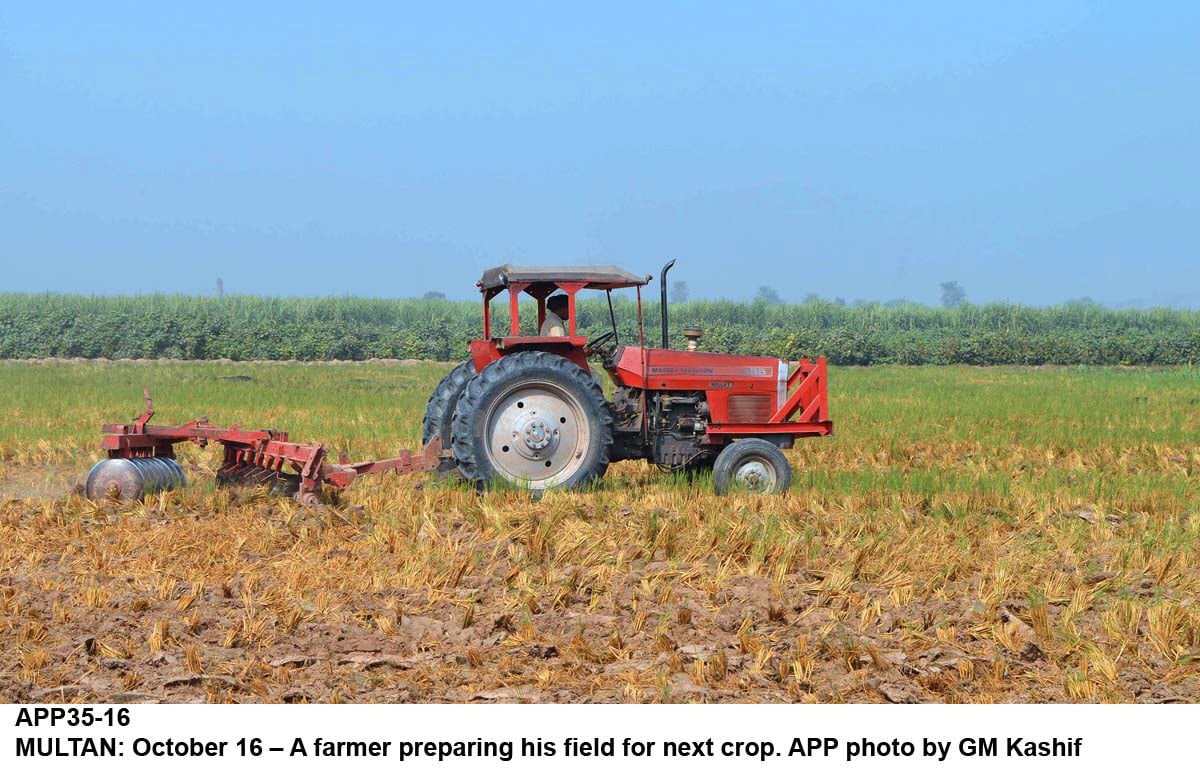
As the weather pundits predicted another spell of rains in upper and central parts of the country from September 26 to October 1, this year's monsoon rains have remained largely beneficial for kharif crops so far, except for areas where breaches occurred owing to the mismanagement of saline water drains by the irrigation authorities.
However, the floodwater, which inundated almost the entire katcha area from Guddu upstream to Kotri downstream, will improve soil fertility. And farmers will grow wheat in the winter once the water recedes.
Agricultural experts said three cash crops, paddy and sugarcane - both high delta crops - and cotton that cover overall 11.4 million acres area in Punjab are also set to benefit from the rains.
However, they cautioned farmers not to leave cotton fields water-logged and recommended immediate water drain out.
In a statement issued in August, the Punjab Agriculture Department said that paddy cultivation had reached six million acres, sugarcane two million acres and cotton 3.4 million acres in Punjab.
The statement said that the rain impact on crops was mixed, adding that it was beneficial for paddy and prevailing weather conditions were suitable for growth of sugarcane. The atmospheric Nitrogen that rain brought to crop fields would prove beneficial, it added. However, the statement said, cotton crop sown on 3.4 million acres in Punjab needed special care in the prevailing situation.
Meanwhile, the IRSA on Saturday released 198,300 cusecs water from various rim stations with inflow of 138,200 cusecs.
According to the data released by IRSA, water level in River Indus at Tarbela Dam was 1539.91 feet and was 141.91 feet higher than its dead level of 1,398 feet. Water inflow and outflow in the dam was recorded as 79,600 cusecs and 110,000 cusecs respectively.
The water level in River Jhelum at Mangla Dam was 1223.65 feet, which was 175.65 feet higher than its dead level of 1,050 feet. The inflow and outflow of water was recorded 15,300 cusecs and 45,000 cusecs respectively.
The release of water at Kalabagh, Taunsa, Guddu and Sukkur was recorded as 90,000, 112,600, 88,400 and 36,800 cusecs respectively.
Similarly, from River Kabul, a total of 19,200 cusecs of water released at Nowshera and 4,300 cusecs released from River Chenab at Marala.

1718122402-0/will-ferrel-(1)1718122402-0-405x300.webp)


1726819153-0/BeFunky-collage-(18)1726819153-0-165x106.webp)













COMMENTS
Comments are moderated and generally will be posted if they are on-topic and not abusive.
For more information, please see our Comments FAQ